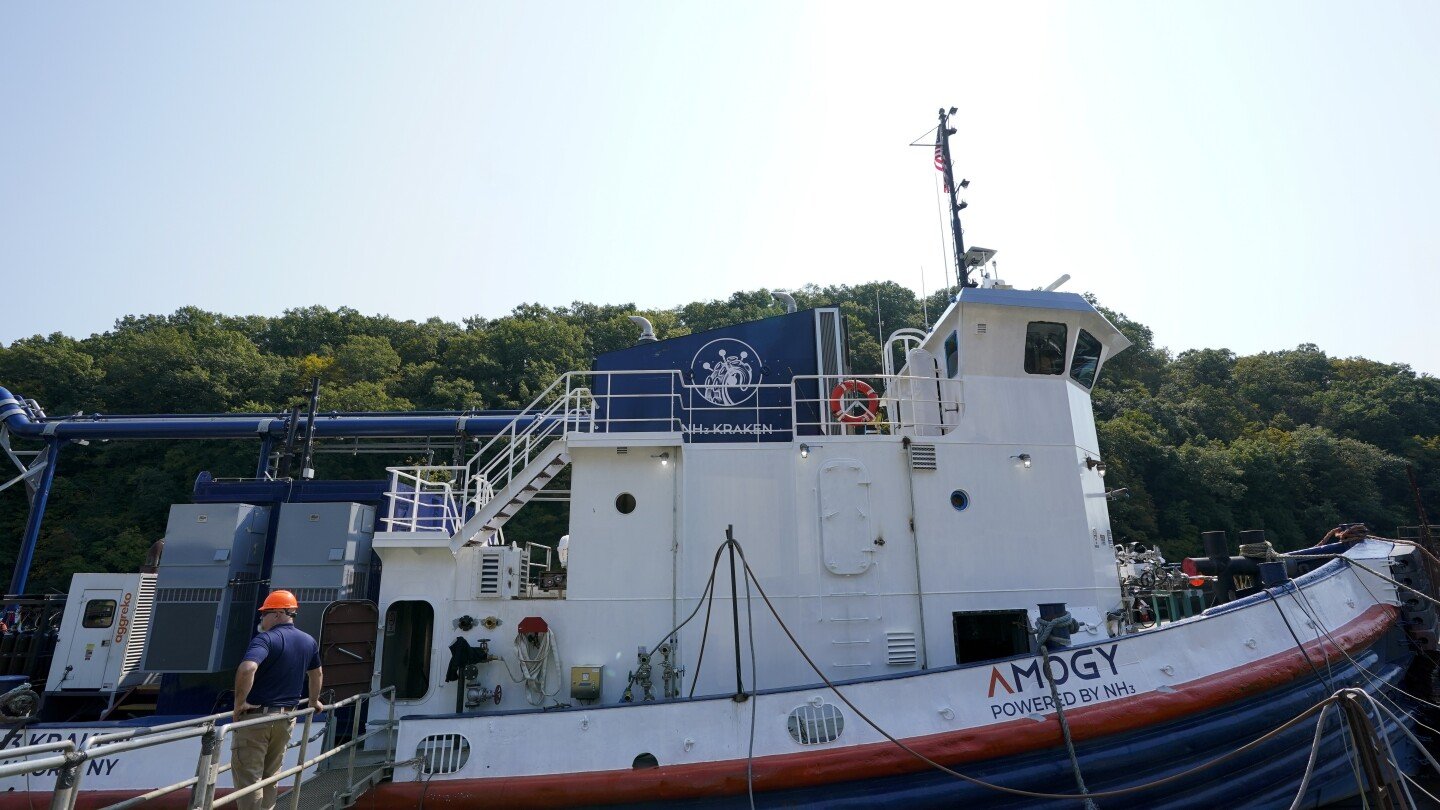On a tributary of the Hudson River, a tugboat powered by ammonia eased away from the shipyard dock and sailed for the first time to show how the maritime industry can slash planet-warming carbon dioxide emissions.
The tugboat used to run on diesel fuel. The New York-based startup company Amogy bought the 67-year-old ship to switch it to cleanly-made ammonia, a new, carbon-free fuel.
They named the tugboat NH3 Kraken, after the chemical formula for ammonia and their method of “cracking” it into hydrogen and nitrogen. Amogy’s system uses ammonia to make hydrogen for a fuel cell, making the tug an electric-powered ship. The International Maritime Organization set a target for international shipping to reach net-zero greenhouse gas emissions by, or close to, 2050.



If you have solar paired with proton exchange membrane electrolysis, you can generate hydrogen very economically. PEM electrolyzers are already around 80% efficient but supply is limited right now. Hydrogen is a pain to store, but if you feed that hydrogen into the Haber-Bosch process you can very efficiently produce ammonia. Ammonia fuel cells are very promising if you’re looking to decarbonize container shipping.
Ah so the ammonia solves the storage issues, thanks for sharing
In terms of vapor pressure, ammonia behaves a lot like propane. You can store it pretty much like propane, liquified under pressure, but it has less energy density and high heat of evaporation so it’s best to withdraw it as liquid to not freeze out container